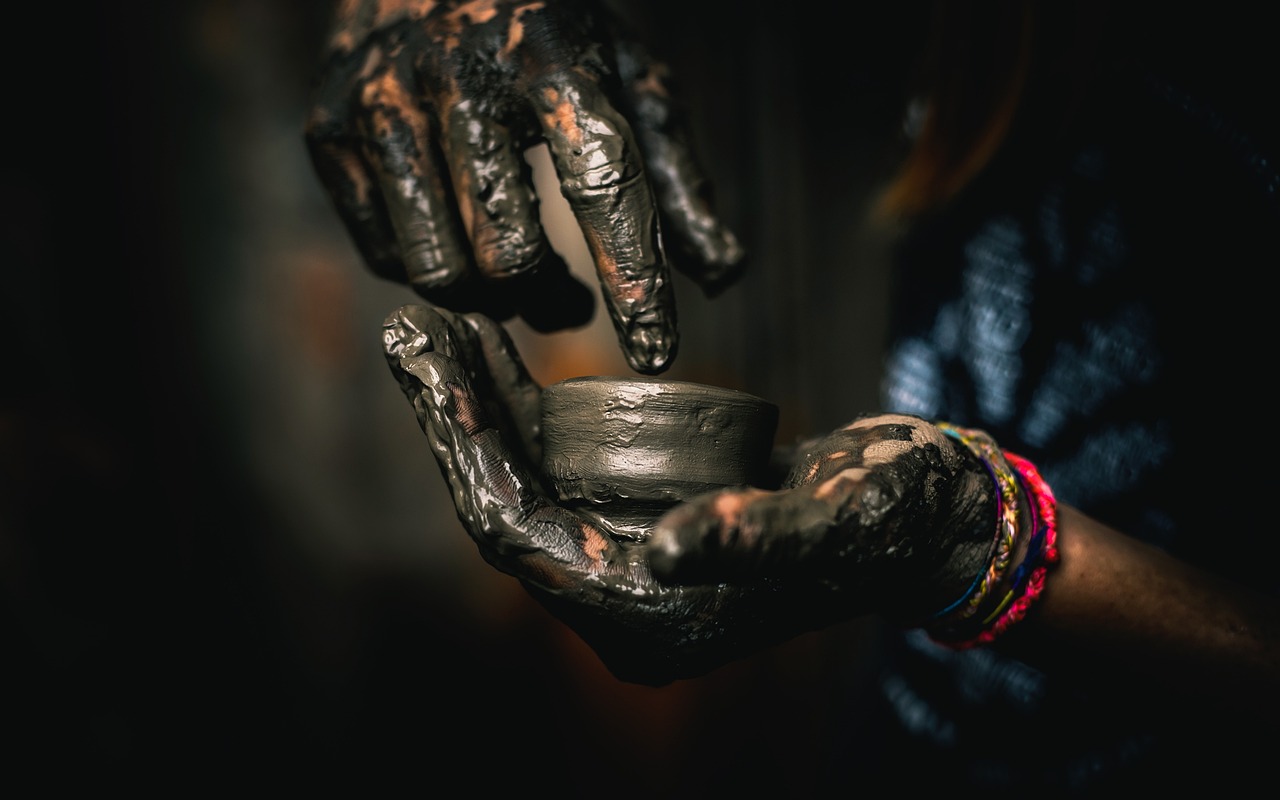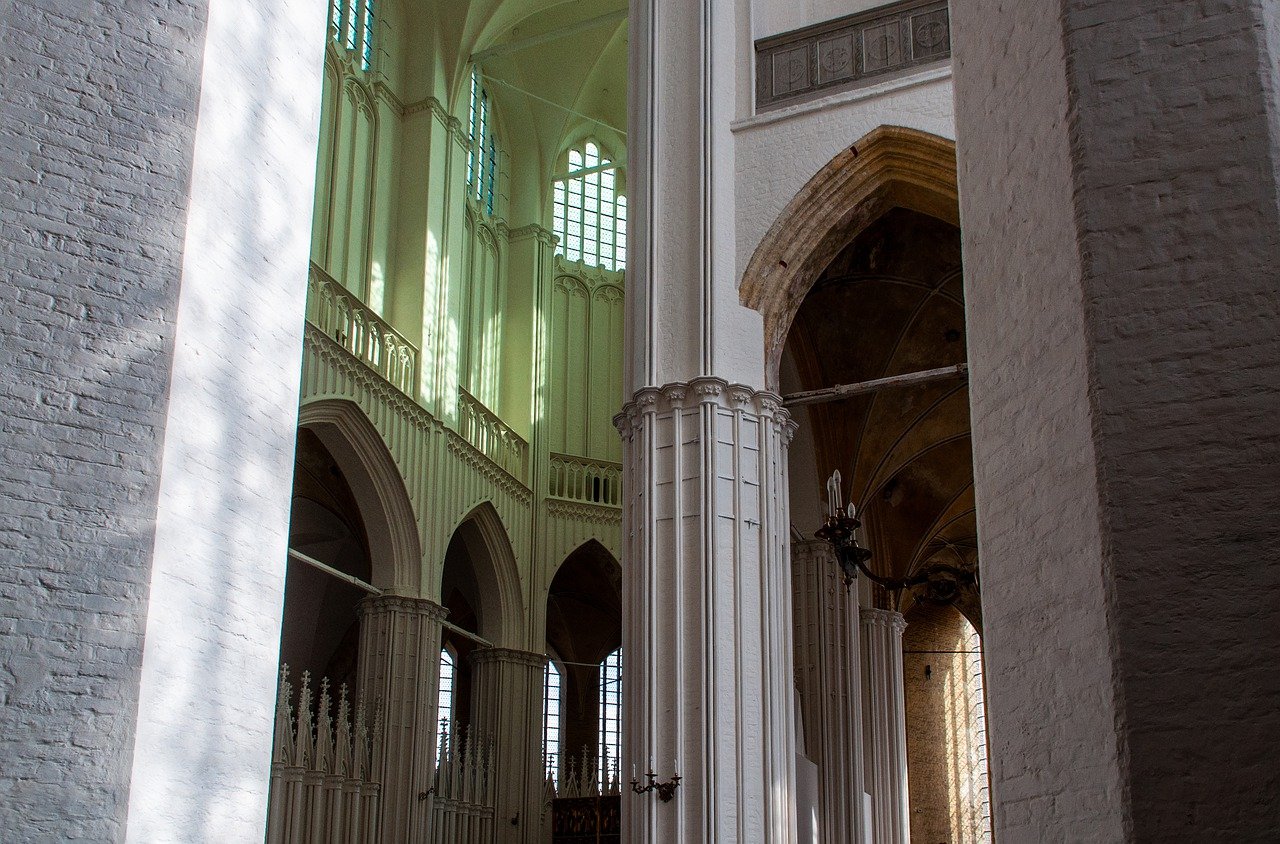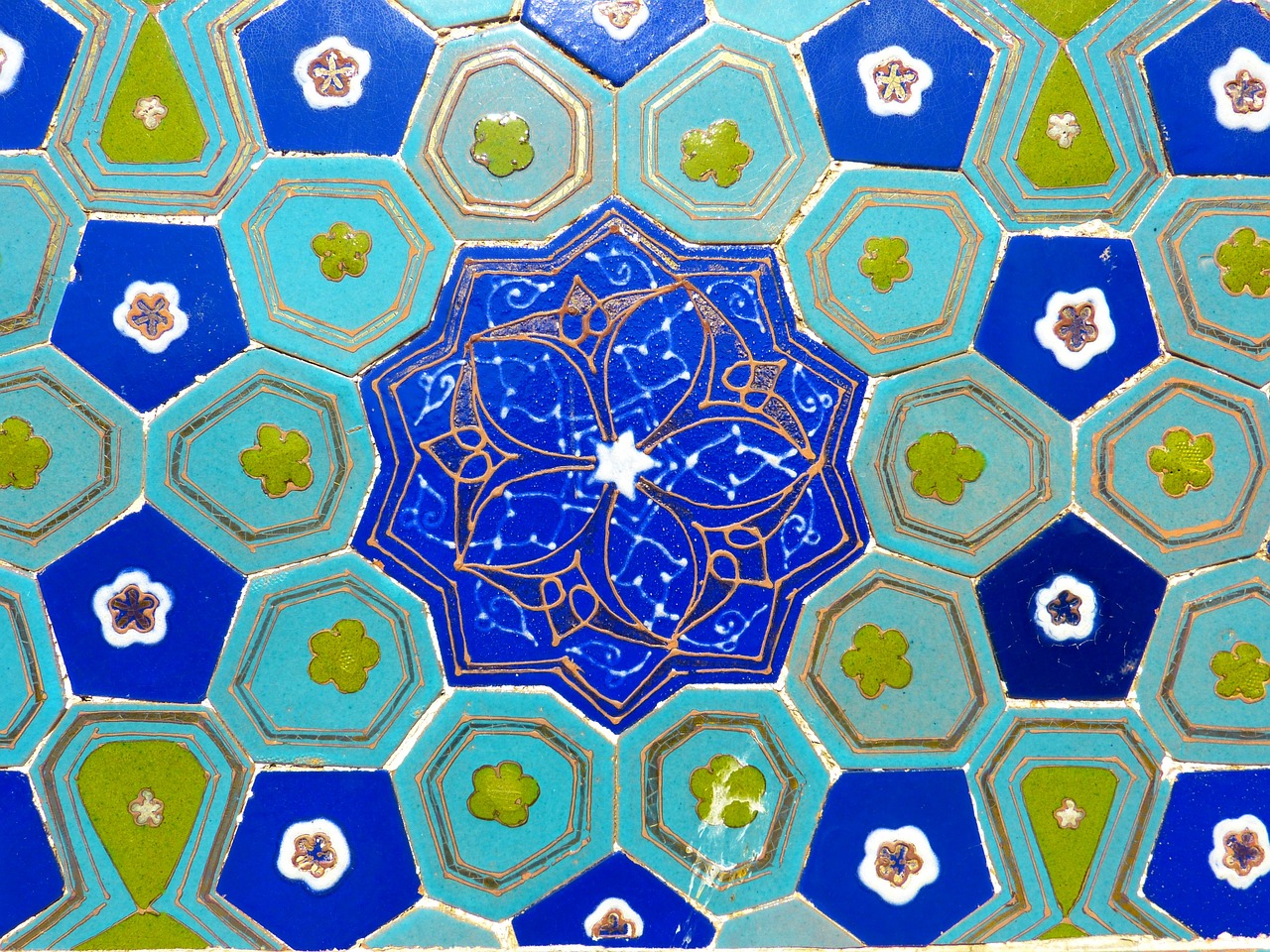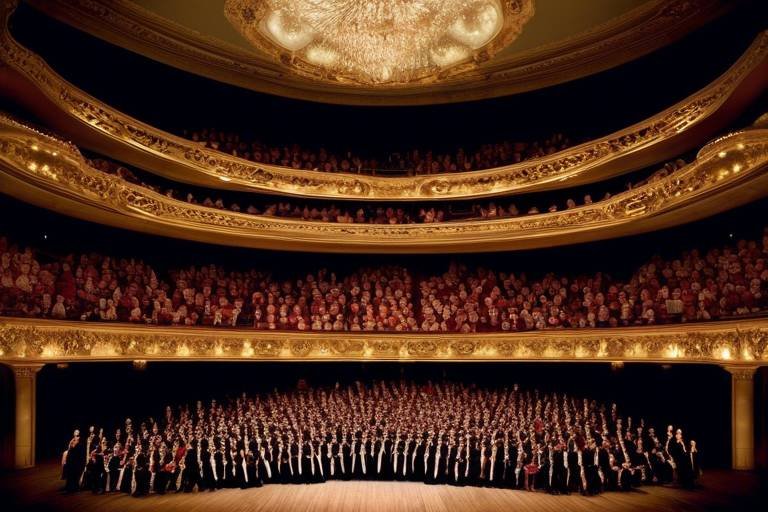The Influence of the Byzantine Empire on Christian Art
Exploring the profound impact of the Byzantine Empire on Christian art unveils a rich tapestry of cultural fusion and artistic innovation. The Byzantine era, characterized by its intricate blend of Eastern and Western influences, played a pivotal role in shaping the trajectory of Christian artistic expression during the medieval period. From the iconic religious imagery to the architectural marvels that adorned the empire's cities, Byzantine artistry left an indelible mark on the development of Christian art.
One of the most distinctive features of Byzantine art is its iconography, which continues to influence Christian religious imagery worldwide. The stylized representations of saints, biblical scenes, and divine figures in Byzantine religious paintings and mosaics set a standard for Christian iconography that endures to this day. The emphasis on spiritual symbolism and divine presence in Byzantine iconography reflects the empire's deep-rooted religious beliefs and commitment to conveying sacred narratives through art.
Examining the architectural legacy of the Byzantine Empire unveils a treasure trove of monumental structures that have shaped Christian religious buildings and structures for centuries. The crowning jewel of Byzantine architecture, Hagia Sophia in Constantinople, stands as a testament to the empire's innovative design principles and engineering prowess. Its soaring domes, intricate mosaics, and grandeur exemplify the Byzantine influence on Christian church design and architectural aesthetics.
The artistry of Byzantine mosaics served as a visual feast for the faithful, adorning churches with intricate depictions of religious scenes and figures. The vibrant mosaics in Ravenna, Italy, stand out as prime examples of Byzantine influence on Christian artistic expression, showcasing a harmonious blend of color, form, and symbolism. These intricate artworks not only decorated sacred spaces but also served as powerful tools for conveying religious narratives and inspiring devotion among the faithful.
An analysis of the religious symbolism in Byzantine-influenced Christian art reveals a rich tapestry of symbolic motifs and themes that have deep spiritual significance. The use of gold backgrounds in Byzantine and Christian art, for instance, symbolizes divine light and holiness, elevating the visual representation of sacred figures and scenes to a transcendent realm. The intricate patterns, rich colors, and symbolic imagery in Byzantine-influenced art reflect a profound spiritual depth and theological complexity that continue to captivate viewers.
Tracing the legacy of Byzantine artistic traditions in Eastern Orthodox Christian art unveils a continuum of artistic innovation and spiritual expression. The enduring impact of Byzantine artistry on Eastern Orthodox religious practices is evident in the intricate iconography, elaborate mosaics, and rich symbolism that define the visual language of the faith. The legacy of the Byzantine Empire lives on in the vibrant art and religious traditions of the Eastern Orthodox Church, serving as a testament to the enduring power of artistic heritage and cultural influence.

Byzantine Iconography
Byzantine iconography holds a significant place in the realm of Christian art, characterized by its unique style and symbolic representation of religious figures. The art of Byzantine iconography emerged as a central element of worship and spiritual devotion in the Byzantine Empire, reflecting the profound influence of Eastern Orthodox Christianity on artistic expression. The iconic images created during this period were not merely artistic representations but were believed to possess spiritual power, serving as windows to the divine realm.

Architectural Legacy
The architectural legacy of the Byzantine Empire stands as a testament to its grandeur and innovation, shaping the development of Christian religious buildings and structures for centuries to come. One of the most iconic architectural wonders of the Byzantine era is the Hagia Sophia, a majestic cathedral located in Constantinople (modern-day Istanbul). This architectural marvel exemplifies the ingenuity of Byzantine builders, with its massive dome, intricate mosaics, and elegant columns.
Furthermore, Byzantine architecture placed a strong emphasis on creating awe-inspiring spaces that reflected the divine nature of Christianity. The use of domes, apse, and narthex in Byzantine churches influenced the design of Christian churches around the world. The intricate brickwork and marble decorations in Byzantine buildings showcased the empire's wealth and artistic sophistication.
The architectural legacy of the Byzantine Empire extended beyond Constantinople to other regions, leaving a lasting impact on Christian architecture in places like Ravenna in Italy. The Ravenna Mosaics are prime examples of Byzantine influence on Christian artistic expression, with their vibrant colors and intricate designs adorning the walls of churches and religious buildings.
Moreover, the concept of centralized church design in Byzantine architecture, with the focus on the sanctuary and the altar, influenced the layout of Christian churches in the medieval period. The use of iconostasis and iconography in Byzantine churches added a layer of spiritual depth to the architectural space, creating a sense of sacredness and reverence.
In conclusion, the architectural legacy of the Byzantine Empire played a pivotal role in shaping the development of Christian art and architecture, leaving a rich heritage that continues to inspire and awe visitors to this day.

Hagia Sophia
Hagia Sophia, the renowned cathedral located in Constantinople, now Istanbul, stands as a testament to Byzantine architectural brilliance and its profound influence on Christian church design. Built in the 6th century, Hagia Sophia's majestic dome, innovative use of pendentives, and intricate mosaics showcase the height of Byzantine architectural innovation. The cathedral's grandeur and spiritual significance have left an indelible mark on Christian religious structures worldwide, inspiring awe and reverence in all who behold its splendor.

Mosaic Artistry
The art of mosaic in Byzantine culture is a testament to the intricate craftsmanship and devotion to religious expression. Mosaic artistry flourished during the Byzantine era, adorning the walls and ceilings of churches with vibrant and symbolic designs. These mosaics served not only as decorative elements but also as a means of conveying religious narratives and teachings to the faithful. The meticulous placement of tiny, colored tiles to create elaborate scenes showcased the skill and dedication of Byzantine artists, leaving a lasting impact on Christian artistic traditions.
One of the most renowned examples of Byzantine mosaic artistry can be found in Ravenna, Italy. The Ravenna mosaics are celebrated for their intricate details, vibrant colors, and rich symbolism. These mosaics, found in churches such as the Basilica of San Vitale and the Mausoleum of Galla Placidia, depict biblical scenes, saints, and symbols of the Christian faith with a level of sophistication that continues to awe visitors to this day. The influence of Byzantine mosaic artistry in Ravenna reverberates through the centuries, inspiring artists and viewers alike with its beauty and spiritual depth.

Ravenna Mosaics
Ravenna Mosaics are a stunning example of the enduring influence of Byzantine art on Christian artistic expression. Located in Ravenna, Italy, these mosaics showcase the intricate craftsmanship and vibrant colors characteristic of Byzantine artistry. One of the most famous sites in Ravenna is the Basilica of San Vitale, known for its exquisite mosaics depicting biblical scenes and figures.
The Ravenna Mosaics stand out for their use of rich colors, intricate details, and symbolic imagery, reflecting the Byzantine artistic style that prioritized religious themes and spiritual symbolism. These mosaics not only served as decorative elements but also as visual representations of Christian narratives, making them an essential part of religious worship and education in the medieval period.
One of the remarkable aspects of Ravenna Mosaics is their ability to convey complex theological concepts through visual storytelling. The use of gold backgrounds, shimmering tesserae, and carefully crafted figures all contribute to creating a sense of divine beauty and transcendence in these artworks. Each mosaic tells a story, inviting viewers to contemplate the mysteries of faith and the teachings of the Christian tradition.
Furthermore, the Ravenna Mosaics demonstrate the technical skill and artistic innovation of Byzantine craftsmen, who perfected the art of creating intricate mosaic compositions that endure the test of time. The preservation of these mosaics allows us to glimpse into the spiritual world of the Byzantine era and appreciate the beauty and depth of Christian artistry that continues to inspire and captivate audiences today.

Religious Symbolism
When delving into the realm of Byzantine-influenced Christian art, one cannot ignore the profound religious symbolism woven into the intricate tapestry of each masterpiece. Symbolism played a crucial role in conveying spiritual messages and theological concepts to the viewers, transcending mere artistic expression. One of the most iconic symbols prevalent in Byzantine and Christian art is the use of gold backgrounds. The shimmering gold backgrounds symbolize divine light, purity, and holiness, elevating the depicted figures to a celestial realm. The radiant glow of the gold leaf evokes a sense of the divine presence, emphasizing the sacred nature of the subject matter.
Furthermore, religious symbolism in Byzantine art often extends to the depiction of halos around the heads of saints and other holy figures. These luminous circles signify the spiritual enlightenment and sanctity of the individuals portrayed, serving as a visual representation of their divine connection. The halo, typically rendered in gold or radiant colors, acts as a celestial crown, highlighting the elevated status of the depicted figures within the religious narrative.
Another prevalent symbol in Byzantine-influenced Christian art is the use of colors to convey theological meanings. Each hue carries symbolic significance, with gold representing the divine, blue symbolizing the heavens, and red embodying the blood of Christ. The careful selection and application of colors in religious artworks were not merely aesthetic choices but deliberate attempts to communicate profound spiritual truths to the beholder.
Moreover, the depiction of gestures and postures in Byzantine art holds symbolic importance, with each bodily movement and pose laden with theological connotations. The graceful gestures of saints and the solemn postures of martyrs serve as visual cues to convey messages of piety, devotion, and sacrifice. Every subtle movement captured in the artwork contributes to the narrative of faith and devotion, inviting viewers to contemplate the deeper spiritual meanings behind the visual representations.

Gold Backgrounds
Gold backgrounds hold a significant symbolic meaning in Byzantine and Christian art, representing divine light and holiness. The lavish use of gold leaf in the background of religious artworks symbolizes the heavenly realm and the divine presence. This practice originated in Byzantine art, where gold was associated with the radiance of God and the eternal nature of spiritual truths. The shimmering gold backgrounds not only added a sense of grandeur and opulence to the artworks but also conveyed a sense of transcendence and spiritual illumination.

Legacy in Eastern Orthodox Art
Exploring the unveils a rich tapestry of artistic traditions deeply rooted in Byzantine influence. The intricate iconography and symbolism prevalent in Eastern Orthodox art reflect the enduring legacy of the Byzantine Empire. From the use of gold backgrounds symbolizing divine light to the depiction of saints and biblical scenes in a stylized manner, Eastern Orthodox art continues to draw inspiration from its Byzantine origins.
The iconic mosaics adorning Eastern Orthodox churches bear striking resemblance to those found in Byzantine structures, showcasing a seamless transition of artistic techniques and religious fervor. The emphasis on spiritual imagery and ritualistic practices in Eastern Orthodox art echoes the profound influence of Byzantine religious beliefs and artistic conventions.
Moreover, the architectural legacy of the Byzantine Empire continues to shape the design of Eastern Orthodox churches, with domed roofs and intricately decorated interiors paying homage to the grandeur of Byzantine architecture. The fusion of art and faith in Eastern Orthodox art is a testament to the enduring impact of Byzantine artistic traditions on Christian religious practices.
Frequently Asked Questions
- What is Byzantine art?
Byzantine art refers to the artistic style that developed in the Byzantine Empire, characterized by rich colors, intricate designs, and religious themes. It heavily influenced Christian art and architecture.
- How did Byzantine culture impact Christian art?
Byzantine culture played a significant role in shaping Christian art through its unique iconography, architectural innovations, and symbolic motifs. The empire's artistic legacy continues to influence religious art to this day.
- Why are gold backgrounds significant in Byzantine and Christian art?
Gold backgrounds in Byzantine and Christian art symbolize divine light and holiness. The use of gold reflects the spiritual nature of the subjects depicted and adds a sense of transcendence to the artworks.
- What are some examples of Byzantine influence on Christian art?
Notable examples of Byzantine influence on Christian art include the iconic Hagia Sophia in Constantinople, the intricate mosaic artworks found in churches, and the enduring legacy in Eastern Orthodox Christian art traditions.
- How did Byzantine iconography impact religious art worldwide?
Byzantine iconography, with its distinctive style and emphasis on religious symbolism, had a lasting impact on religious art worldwide. It influenced the portrayal of saints, biblical scenes, and religious narratives in various cultures.



















